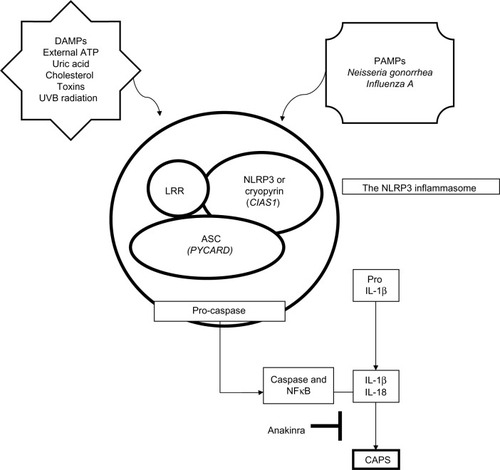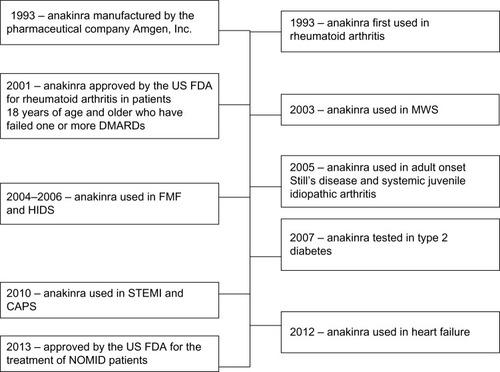Figures & data
Table 1 Similarities and differences between CAPS with symptom progression from the mildest form to the most severe form of the disease
Figure 1 Pathophysiology of CAPS. Activation of the NLRP3 inflammasome is triggered by exposure of immune cells to a variety of danger-associated molecular patterns and pathogen-associated molecular patterns. The leucine-rich repeat domain of the NLRP3 is thought to serve as an autoinhibitor by self-folding. The molecule spreads out, dimerizes, and associates through homotypic interaction with the ASC adaptor protein to mediate the proteolytic processing of pro-caspase 1 to caspase-1. The ASC protein also interacts with cryopyrin. When cryopyrin binds to ASC it can result in NFκB and caspase-1 activation. Once caspase-1 is activated, it results in cleavage of pro-IL-1β and pro-IL-18 into their mature forms IL-1β and IL-18, respectively, which is secreted by the immune cell. Thus, activated cryopyrin induces release of the active form, IL-1β.

Figure 2 Timeline highlighting use of anakinra in various disease states.

Table 2 Examples of conditions treated by anakinra
Table 3 Diseases showing positive effects of treatment with anakinra
